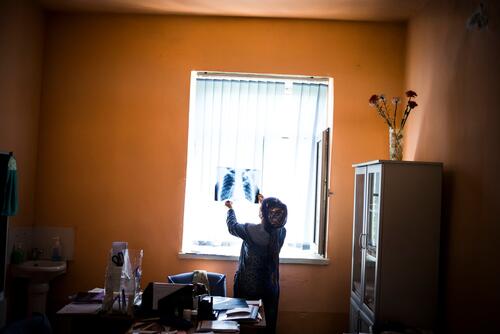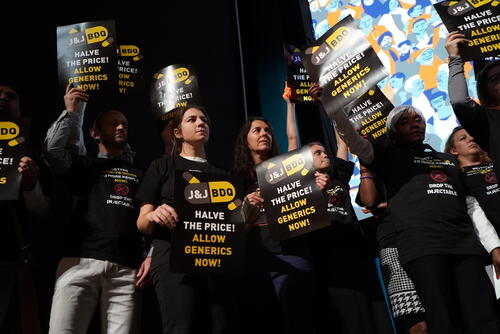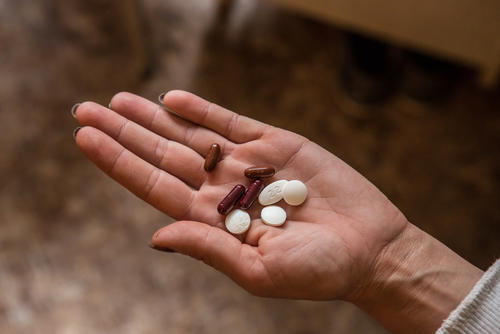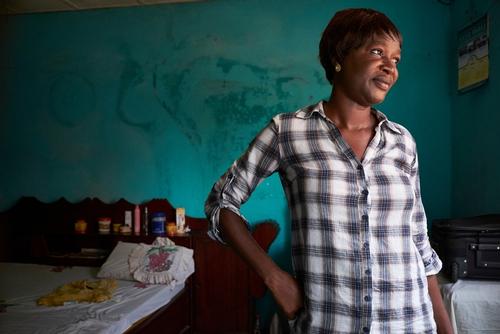33-year-old Aida* has two sons, aged six and 10. She was diagnosed with multidrug-resistant tuberculosis (MDR-TB) in 2016. After four months in hospital in Kara-Suu, Kyrgyzstan, Aida was released to outpatient care but the side-effects of her treatment made taking public transport each day deeply challenging. As an alternative, Aida was offered video-observed treatment to help her continue her treatment without the necessity of daily visits to the MSF clinic. On 28 November 2018, after nearly two years of battling MDR-TB, Aida was told she was cured.
I had many side-effects from my MDR-TB treatment. I felt like my body was rejecting the medication. I had headaches, stomach aches, vomiting. When I was put on outpatient care it was really hard for me to go to the directly-observed treatment (DOT)Directly-observed treatment (DOT) is a method of drug administration where a health care professional watches a patient taking each dose of a medication. DOT is used to ensure the person receives and takes all medications as prescribed and to monitor response to the treatment. DOT is widely used in the treatment of tuberculosis. corner every day by public transport to get my medication.
Sometimes after leaving the DOT corner I would feel dizzy on public transport; I didn’t recognise people and would lose my sense of direction. There were times when I would miss my stop and wouldn’t know where I was. I was losing my mind. I wouldn’t even recognise my own home.
So I decided to stop the treatment. I told my doctor that I could not do this anymore; I couldn’t go through this every day. I said, I’d rather die at home peacefully, than die on public transport. The doctor asked me if I would like to start video-supported treatment instead and I agreed.
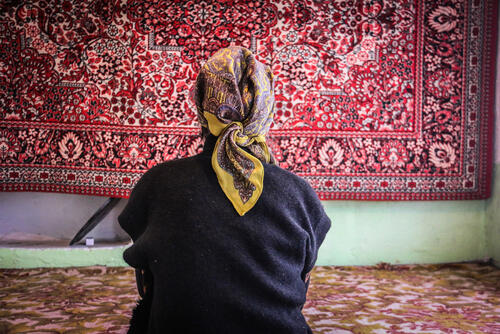
MSF gave me a smartphone that had the WhatsApp messaging app installed on it. The nurse would give me enough medications for one week. Every day I would have a video call with the nurse and would show her that I was taking the drugs. I started feeling a little bit better. I didn’t have to leave the house every day to go to the DOTs corner; I didn’t have to take public transport. I would take the medication; eat well and lie down a little.
After I started the video-supported treatment, it got easier. I still had side-effects from the medication, but they were less severe. It was easier to handle them. I felt like I could finish treatment now. I told myself I need to get better and get over it.
When doctor told me that I was not sick anymore, I cried with happiness. When I told my kids they were so happy, they hugged me tight and said “Finally!”. Now I am cured I’m trying to help my kids more; my son’s teacher said that my son had changed. She even asked me if I had hired a tutor, but I just started helping them and being more attentive.
I am helping with chores and trying to be a better mother. I missed out on so much, but now I am helping them with homework, I am starting to be able to do something.
Now I am finally cured, I have a lot of plans. First, I need to have better health and heal over the winter, I will look after my kids, be there for them. In spring I will start working.
*Name has been changed to protect patient privacy.



